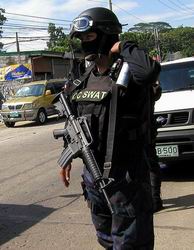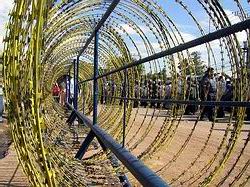(all photos right-clicked from arkibongbayan.org; May 24 election fraud rallies)
Any experienced ghostwriter of formal speeches might tell you that the theme of a formal speech, or the sentiment of the speaker, all photos downloaded from arkibongbayan.org
all photos downloaded from arkibongbayan.org
is found in the beginning and end of the speech – the rest are just bridges, bridge- paragraphs, of the beginning to the end.
In the President’s SONA, those bridge-paragraphs were literally, of bridges – roads, airports, shiplanes, waterways, power plants. A bit of legislative agenda here and there on the political assassinations and a pitch for education here and there.
85% of the body of the SONA – highways, byways, airways, waterways – tell us that the nation has a President who is surely a ways-and-means committee leader (no pun meant); that the country has always had her, a President who, during work-hours, was awake and able to sign infrastructure contracts and disbursement vouchers and priority yellow-tabbed instructions to the budget department for her allies (never mind commissions up and down here and there). 
That is positive. In the sense of, “at least”. If anybody asked you if there was anything positive you could say about the speech, that’s the one: the President was able to deskwork consisting of signing contracts, reading memos, giving instructions to release money, and all that on work-days when everybody is awake and working at least.
That is what the list of infrastructure projects in the SONA means: no grand peace plan; or drastic approach to provide temporary relief from hunger and provide strategic solutions to unemployment, but she sure can sign disbursement vouchers.
Not to fret, with any luck, by next year’s SONA, many unsolved killings would still be unsolved, most of those going hungry by next year would have migrated or starved to death, and there would still be war with no proposals for solutions in sight.
But maybe there was a bit of vision towards the end (“parametered” by the beginning of her speech).
Her real sentiment is found at the end of her speech, the most applauded, cued or not. For those who did not get why it was the most applauded or why it had been cued for that, here’s why:
She said: “From where I sit, I can tell you: a President can always be as strong as she wants to be.” (strongest applause).
“always” is not the same as “only”; in fact, it has the opposite meaning. “ xxx a President can always be as strong as she wants to be” is not the same as “xxx a President can only be as strong as she wants to be”; certain people might have thought they heard the latter and were puzzled, or applauded her; but it was the former that she said. It’s the opposite. The latter ( “I can only be as strong as I want to be”) implies that her power is limited by her will to exercise her powers, or that her will will not exceed her limited power. It’s the opposite. She will “always be as strong” as she wants to be. That means her powers are not limited by anything (“as strong as she wants to be”) or that she thinks her powers are not limited by anything. She could have said “as strong as required by the nation’s interest”, or something. But she said “always as strong as she wants to be.” 
But she is “parametered” by the beginning of the speech (“tapos na ang eleksyon; tapos na ang pamumulitika sa ating bayan, etc.” “elections are over; the time for divisive politics in our country is over, etc.” ); she is not supposed to talk about “politics”; in the end, however she betrays her beginning; and tries to hide it in casual but “ambiguous” language.
Before that, she said too : “My wish: that we will achieve my vision by the time I step down. That reforms will be fixed and bear fruit by then; all that will be left to my successor is to gather the harvest; he or she will have an easier time of it than I did. xxx”
She further said: “xxx They say the campaign for the next election started May 15. Fine. I stand in the way of no one’s ambition. I only ask no one stands in the way of the people’s well being and progress. xxx”
Her sentiment is: Try not to think that I will run again. And stop standing in my way. (it is the President who defines for herself what the national interest is.)
She further said “Uulitin ko, hindi ako sagabal sa ambisyon ninuman xxx” (“I repeat, I am not a hindrance to anyone’s ambition xxx”).
But only to add: “Make no mistake: I will not stand idly if anyone tries to stand in the way of the national interest and tries to block the national vision.”
And that’s where she finished with: she will always be as strong as she wants to be.
She is telling critics, destabilizers, ambitious politicians (and this is where she finished): Don’t dismiss me. You haven’t seen the last of me. I am still President.
And that’s the smallness of this speech.
As she tries to ride into the sunset with what she thinks is her legacy of bridges, roads, airports: but leaving behind, in reality and in the memory of this nation, a bloody trail of systematically, physically exterminated rank-and-file members of people’s organizations and those who dared oppose her.

One thought on “The Beginning and the End”